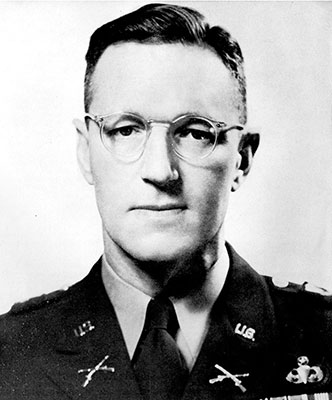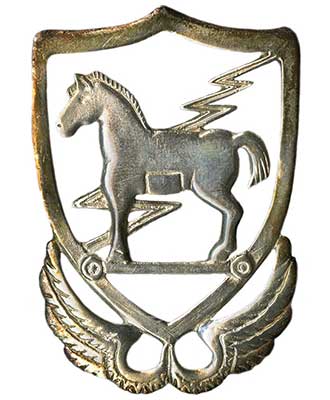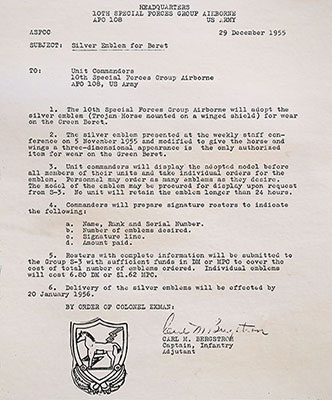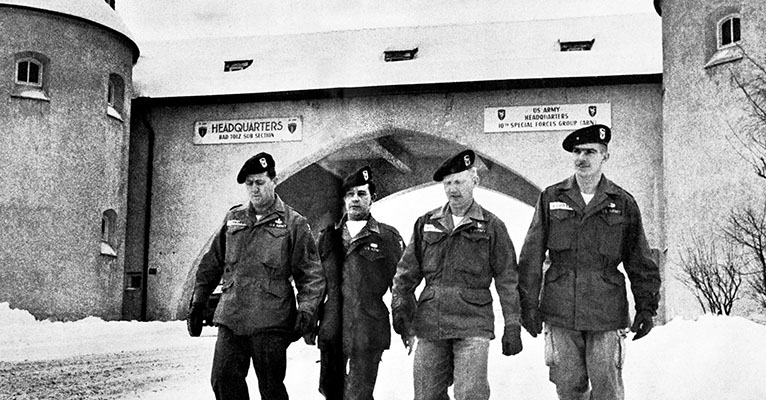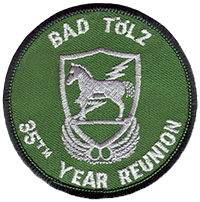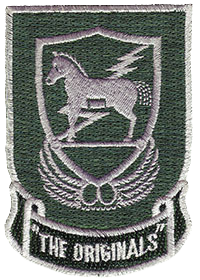DOWNLOAD
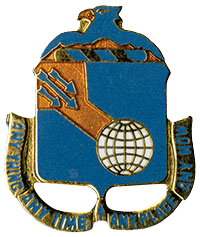
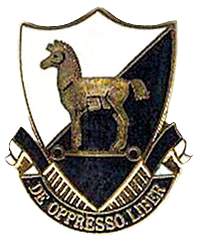
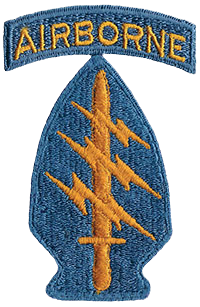
In early 1953, Roger M. Pezzelle and Herbert R. Brucker, two infantry Captains serving in the 10th Special Forces Group (SFG) at Bad Tölz, Germany met at the European Exchange Commission [today’s Army and Air Force Exchange Service]. An excited Pezzelle showed Brucker a magazine on sale that had a 77th SFG soldier wearing a green beret on its cover.1 Captain (CPT) Pezzelle had submitted a supply request for berets when the 10th SFG was still at Fort Bragg. The unit deployed before the berets arrived. They were well-received by the former 10th SFG men who stayed to serve as cadre for the 77th SFG. CPTs Pezzelle and Brucker were determined to get the headgear for the 10th SFG. In the meantime, in an effort at one-upmanship, Pezzelle decided a unique badge was also appropriate.
Insignia have long served to identify special military organizations. This has been especially true for Special Forces. From its beginning in 1952, Special Forces adopted distinctive uniform affectations and insignias to set itself apart. The most recognized today are the Green Beret and the Special Forces Shoulder Sleeve Insignia (SSI) created by CPT John W. Frye, 77th SFG (approved 22 August 1955). A modified version of that SSI is now worn by all personnel assigned to the U.S. Army Special Forces Groups and subordinate units not authorized their own SSI.2 This article will focus on the creation of the 10th SFG Trojan Horse beret badge, a well-known example of how Special Forces built its strong identity and traditions.
Unlike the Special Forces SSI designed by CPT Frye, this insignia was worn by 10th SFG personnel on the unofficial beret. The Green Beret, whose origins will be the subject of a future article in Veritas, was eventually approved by President John F. Kennedy in 1961. But, the 10th SFG’s distinctive badge never received official approval.
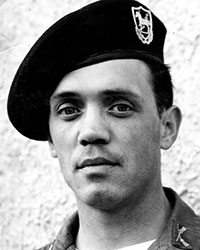
Born to Italian-immigrants, Pezzelle was a WWII veteran. He served with the 473rd Infantry Regiment (Separate) in Northern Italy in 1945 [Commanded by Colonel (COL) William P. Yarborough].3 Having separated from service after the war, Pezzelle rejoined the U.S. Army in 1948 and served in the 82nd Airborne Division before joining the 10th SFG in 1952. Like CPT Brucker, he deployed with the 10th SFG to Germany in December of that same year. In the 10th SFG he concurrently served as an assistant S-3 and as an “A” team commander.4
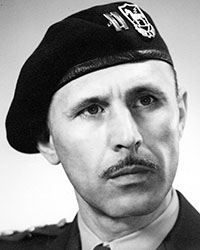
After seeing the magazine cover photograph, CPT Brucker and his wife tackled the beret problem while Pezzelle got to work on the badge. The Bruckers found Mutze Muller, a German haberdasher, to custom-make their berets.5 Pezzelle, a talented amateur artist, was inspired by the French parachutist beret badge with its winged knife.6 Instead of adapting the French insignia, Pezzelle chose the Trojan Horse as the badge centerpiece. On 5 November 1955 he briefed his badge design and showed Muller’s prototype beret at a 10th SFG staff meeting. Commanding Officer COL William E. Ekman recommended that the badge be modified to give it a three-dimensional appearance.7
On 17 November, a memorandum was sent to the A Detachment commanders that announced that the beret was being adopted by the 10th SFG. They were told to poll their soldiers to see if they wanted to adopt the Trojan Horse insignia for wear on the beret.8 Sergeant Rudolf G. Horvath remembered: “We were asked what we thought about it. We were at liberty to suggest other forms of insignia.”9 Like the majority, Horvath approved of the insignia. Second Lieutenant Timothy G. Gannon said that the men of the 10th SFG “saw a similarity between the techniques used in the Trojan Horse in the old days and in what we saw as our mission in the new time frame; surreptitious entry, undercover placement for awhile, and then coming out and doing your thing.”10

